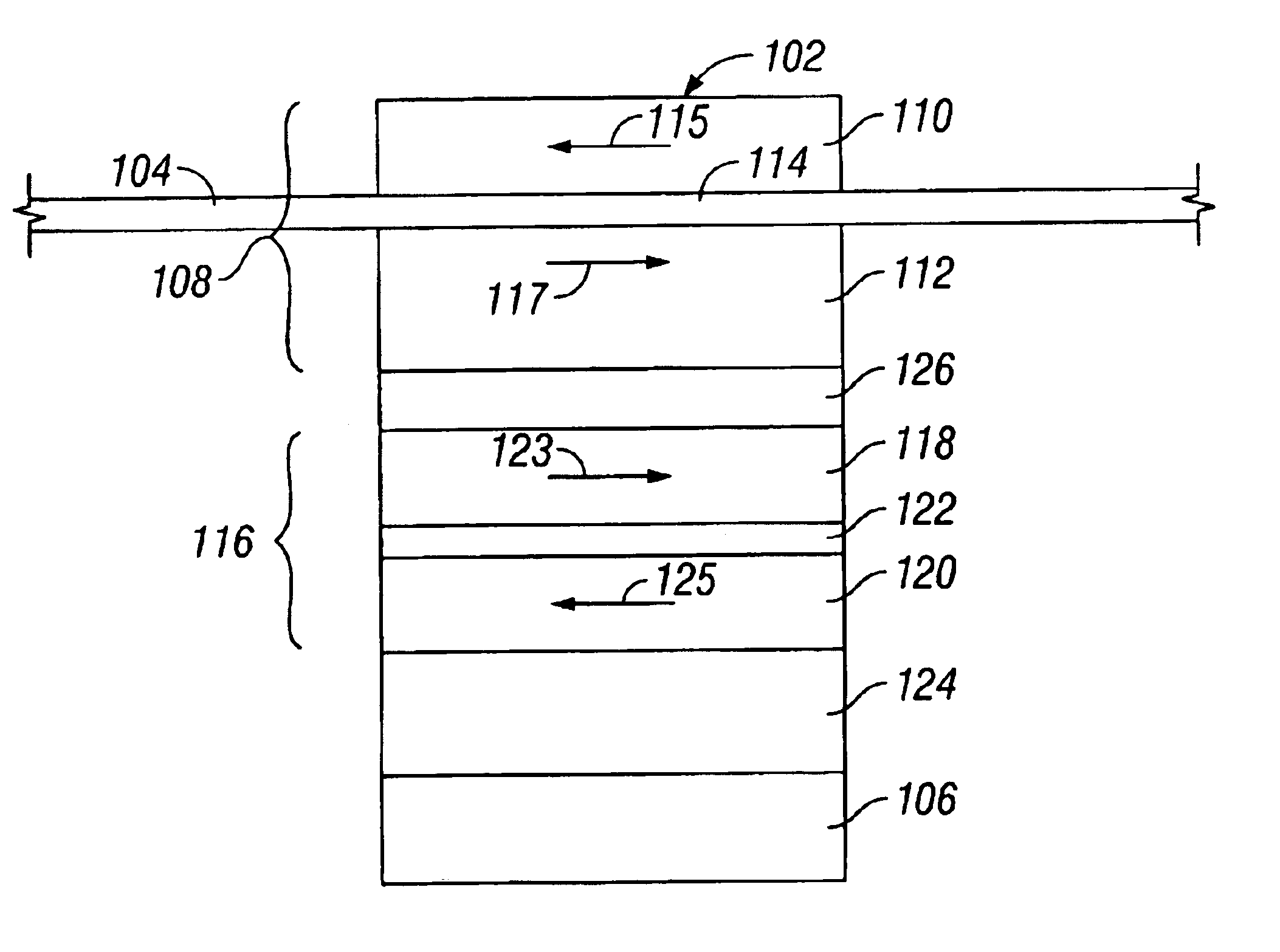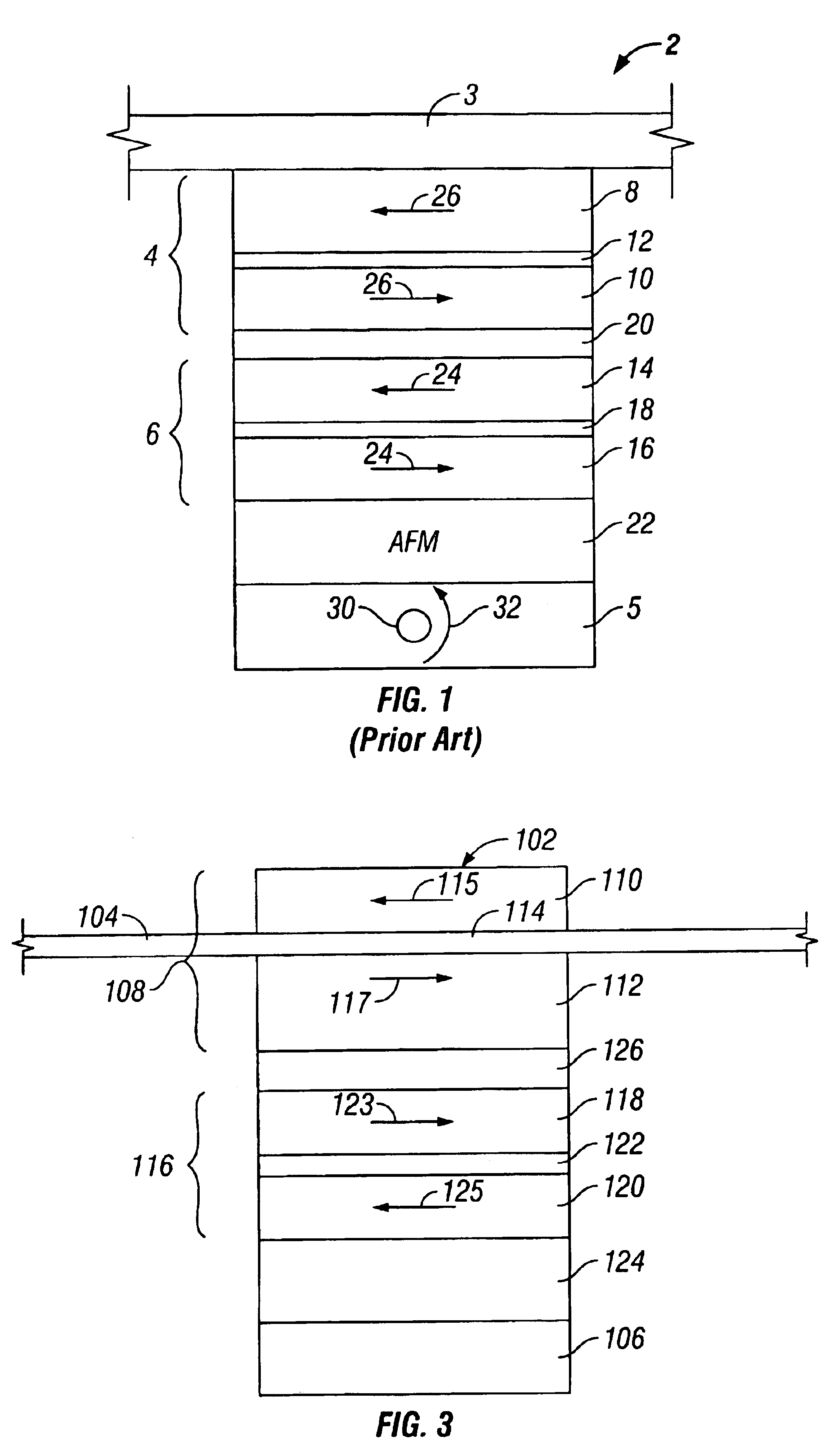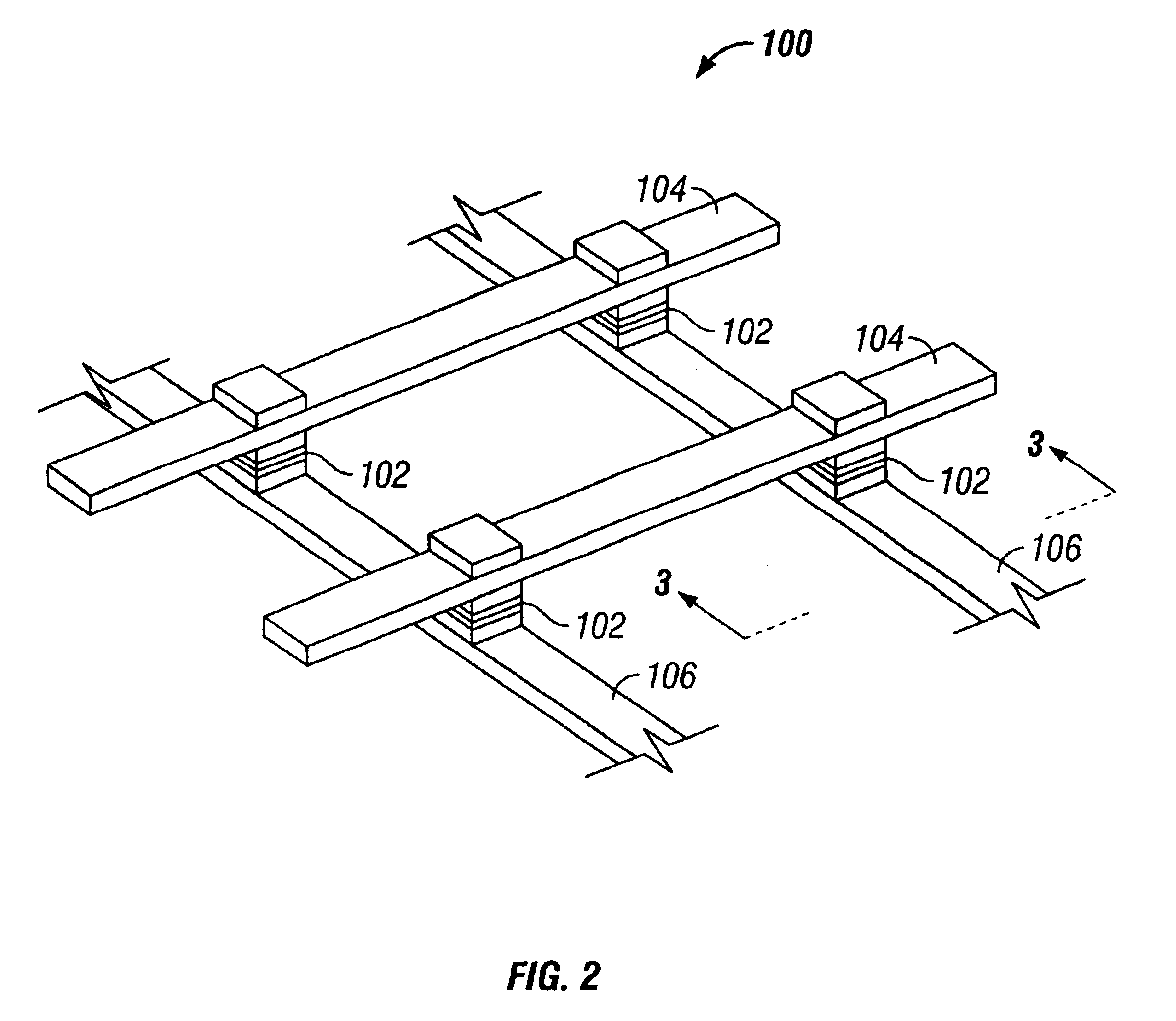Antiferromagnetically coupled bi-layer sensor for magnetic random access memory
- Summary
- Abstract
- Description
- Claims
- Application Information
AI Technical Summary
Benefits of technology
Problems solved by technology
Method used
Image
Examples
Embodiment Construction
FIG. 2 illustrates an exemplary Magnetic Random Access Memory (MRAM) array 100 according to a preferred embodiment of the invention. A plurality of magnetic tunnel junction (MTJ) cells 102 are provided at intersections of a rectangular grid of electrically conducive lines 104, 106. These electrically conductive lines include a set of conductive lines that function as parallel word lines 104, configured in a horizontal plane, and another set of parallel bit lines 106, arranged generally perpendicular with the word lines in another horizontal plane so that the word lines 104 and bit lines 106 form a grid and appear to intersect if viewed from above. Although two word lines 104 and two bit lines 106 are shown, one skilled in the art will recognize that the number of such lines would typically be much larger. A MTJ cell 102 is formed at each intersection of a word line 104 and a bit line 106 to vertically interconnect the word line with the bit line. The MTJ cell 102 can be switched bet...
PUM
 Login to View More
Login to View More Abstract
Description
Claims
Application Information
 Login to View More
Login to View More - R&D
- Intellectual Property
- Life Sciences
- Materials
- Tech Scout
- Unparalleled Data Quality
- Higher Quality Content
- 60% Fewer Hallucinations
Browse by: Latest US Patents, China's latest patents, Technical Efficacy Thesaurus, Application Domain, Technology Topic, Popular Technical Reports.
© 2025 PatSnap. All rights reserved.Legal|Privacy policy|Modern Slavery Act Transparency Statement|Sitemap|About US| Contact US: help@patsnap.com



